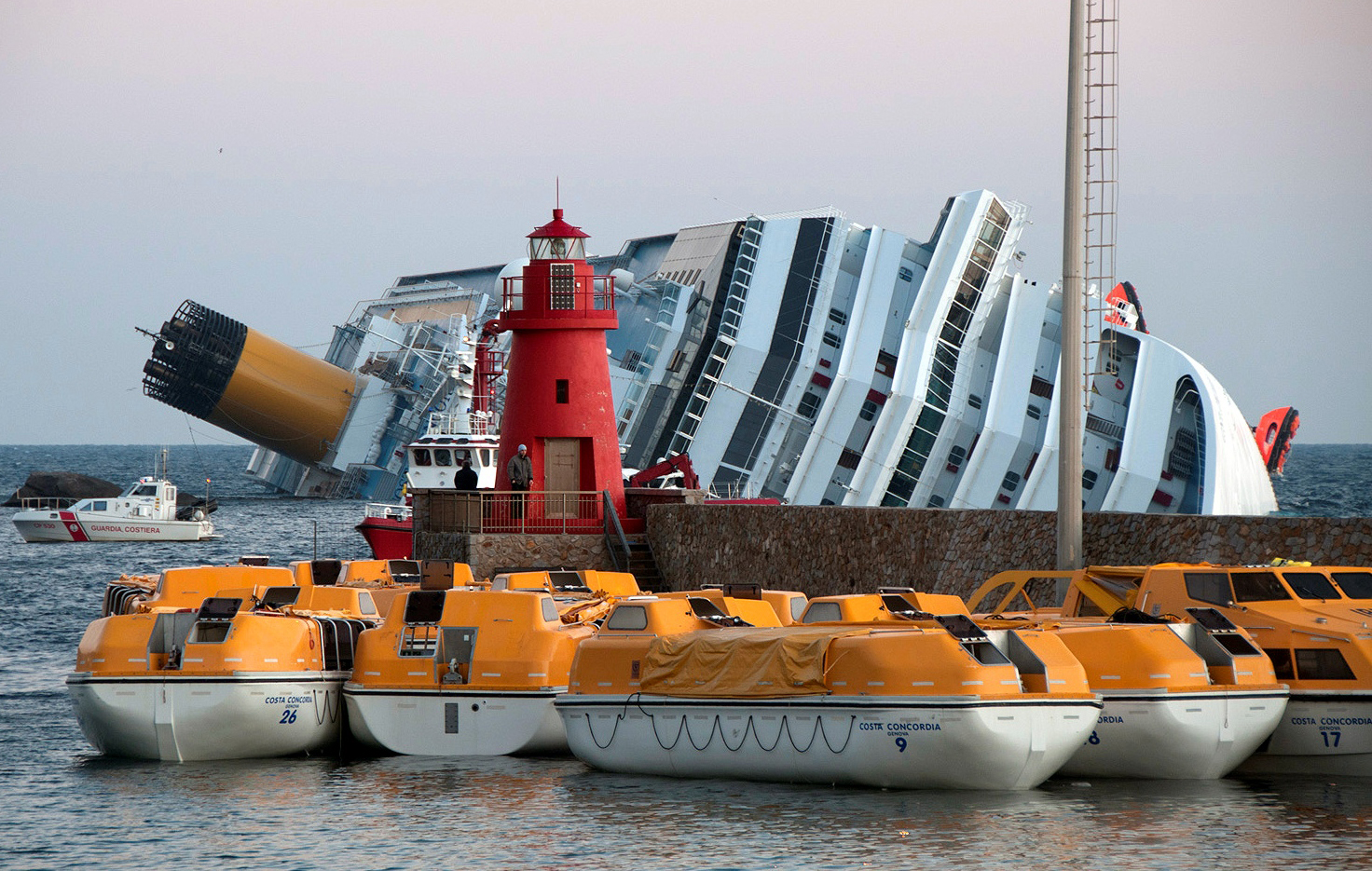Inflatable bracelets could help prevent ships from capsizing when damaged. Delft students calculated how this extra safety measure can be achieved.
Cruise ship Costa Concordia wrecked off the coast of Isola del Giglio on 13 January 2012. (Photo: Wikipedia)


